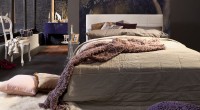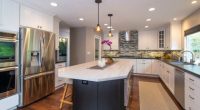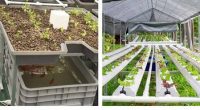Timeless Elegance: Uses and Benefits of Porcelain Slabs in Modern Design
When aesthetics meets innovation, the result is nothing short of remarkable. In the world of modern design, the appearance of porcelain slabs marks a new era. These large-format tiles offer a seamless, luxurious finish to various surfaces, enhancing both residential and commercial spaces. Offering aesthetic appeal, durability, and versatility, this material is redefining modern surfaces, allowing the creation of spaces that are both visually stunning and highly functional.
What are Porcelain Slabs?

Porcelain slab tiles are large-format, thin ceramic panels made from a refined clay mixture that is fired at extremely high temperatures. This process results in a dense, non-porous, and highly durable material. These slabs typically come in sizes that are much larger than standard porcelain tiles, often ranging from 3×6 feet to as large as 10×5 feet. Their thickness can vary but generally falls between 3 to 20 mm.
Timeless Elegance
Drawing inspiration from natural stone but offering a range of finishes and designs, sleek and sophisticated porcelain slabs transcend passing trends and remain relevant in interior design for years to come. Their polished surfaces exude a sense of luxury, while the wide array of patterns, including marble, granite, and concrete looks, allows for creativity and personalization in design. The large size of these slabs minimizes grout lines, creating a clean and cohesive look that enhances the visual continuity of spaces.
What Are the Advantages of Porcelain Slabs?
In addition to the visual appeal it creates, this material offers an array of benefits:
- Longevity: Porcelain slabs are renowned for their durability. They’re capable of withstanding scratches, stains, and high temperatures, which means they’re highly suitable for frequently used and heavily used areas, like kitchen counters and floors.
- High Density: Manufactured under high pressure and temperature, the slabs boast a high density that contributes to their strength and resistance to impact.
- Easy Cleaning: The non-porous nature of porcelain makes it highly resistant to moisture and bacteria, simplifying cleaning and maintenance. Regular wiping with a damp cloth is often sufficient to keep the surfaces pristine.
- Stain Resistance: Unlike natural stone, porcelain does not require sealing, and its resistance to staining substances like wine, coffee, and oils makes it a practical choice for kitchens and bathrooms.
- Anti-Bacterial: The non-porous surface of the slabs does not harbour bacteria or mould, promoting a healthier living environment. This is particularly advantageous in kitchens, bathrooms, and medical facilities.
- Sustainable Production: Porcelain slab is often produced using natural raw materials and sustainable manufacturing processes. Additionally, it is long-lasting, reducing the need for frequent replacements and minimizing environmental impact.
- Aesthetic Versatility: Slabs come in an extensive range of colours, textures, and finishes, from glossy to matte. This variety enables designers to replicate the look of natural materials like marble and wood, as well as more contemporary, industrial styles.
- Customisation: Advanced printing technologies allow for the creation of custom designs and patterns, offering endless possibilities for unique and personalized interiors.
Uses in Modern Design

Kitchen Countertops
The kitchen is a focal point in modern homes, and porcelain slab tiles provide a practical and stylish solution for countertops. Their resistance to heat from pots and pans, as well as their ability to withstand knife scratches, makes them ideal for culinary activities. The large format allows for expansive countertop surfaces with minimal joints, contributing to a sleek and modern kitchen design.
Bathroom Surfaces
These slabs are perfect for bathrooms due to their resistance to water and humidity. They can be used for vanity tops, shower walls, and flooring, ensuring a cohesive and elegant look while preventing water damage. The ability to mimic luxurious materials like marble at a fraction of the cost makes them a popular choice for creating spa-like bathroom retreats.
Flooring
The material is ideal for flooring in high-traffic areas due to its durability and low maintenance. It can withstand the wear and tear of daily foot traffic without losing its aesthetic appeal. These slabs are also compatible with underfloor heating systems, providing both comfort and efficiency in modern homes.
Wall Cladding
These pieces can transform ordinary walls into stunning feature walls. Their large size and variety of designs can create a dramatic impact in living rooms, bedrooms, and commercial spaces. Due to their weather resistance and durability, the slabs are increasingly used for exterior facades, offering a sleek and modern appearance to buildings while protecting them from the elements.
Furniture and Decorative Elements
Designers are increasingly incorporating this innovative solution into custom furniture designs, such as dining tables, coffee tables, and shelves. These pieces add a touch of elegance and sophistication to the interiors. They are also used to create striking fireplace surrounds that serve as focal points in living spaces, combining functionality with aesthetic appeal.
Finishing Thoughts
These stunning slabs represent a significant advancement in building and design materials, offering a combination of durability, low maintenance, and aesthetic appeal. Their large format provides a modern, seamless look that is highly sought after in contemporary design. Whether used for countertops, flooring, wall cladding, or custom furniture, this material delivers both functional and visual benefits that make it a superior choice for many applications.



